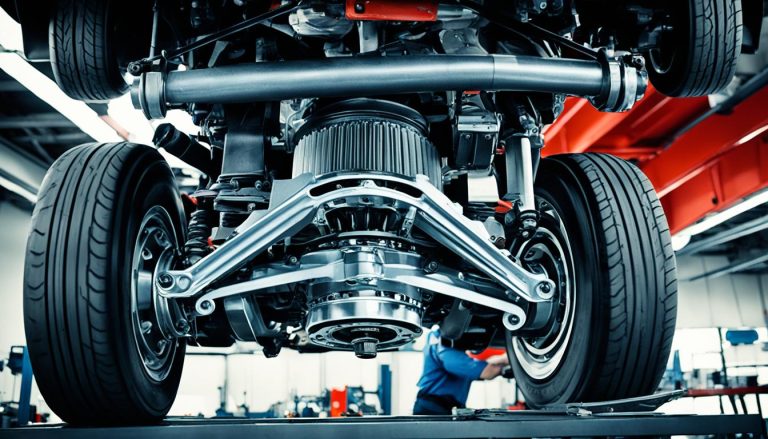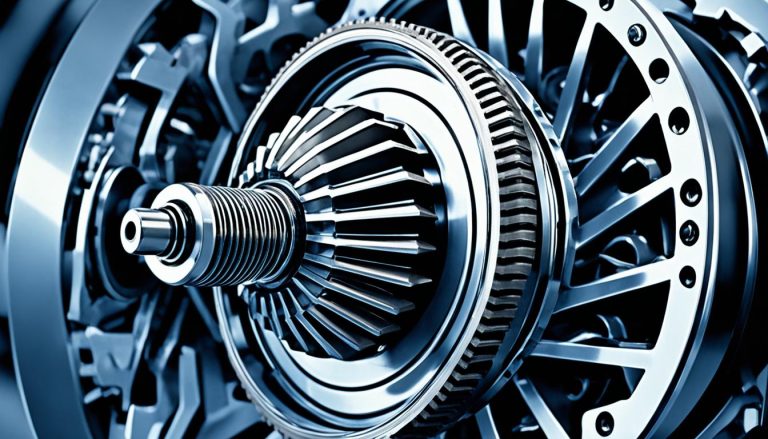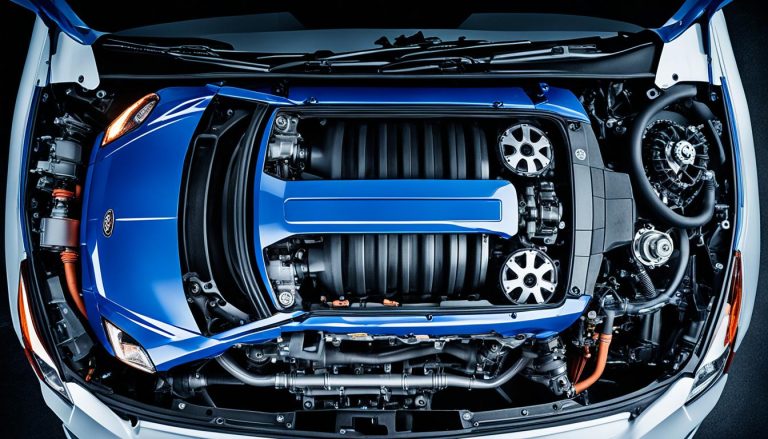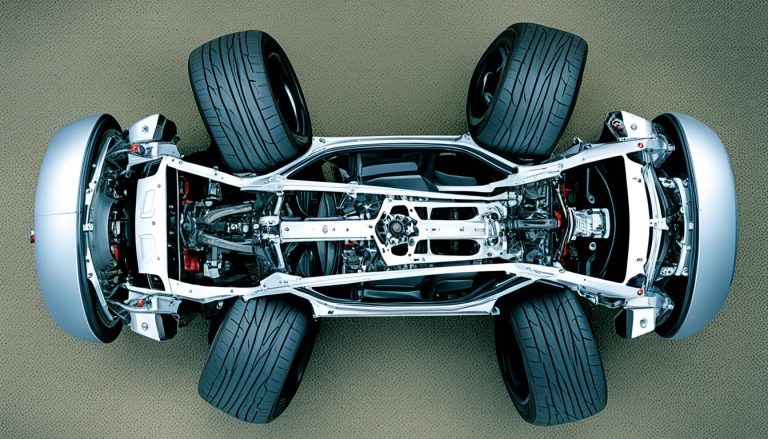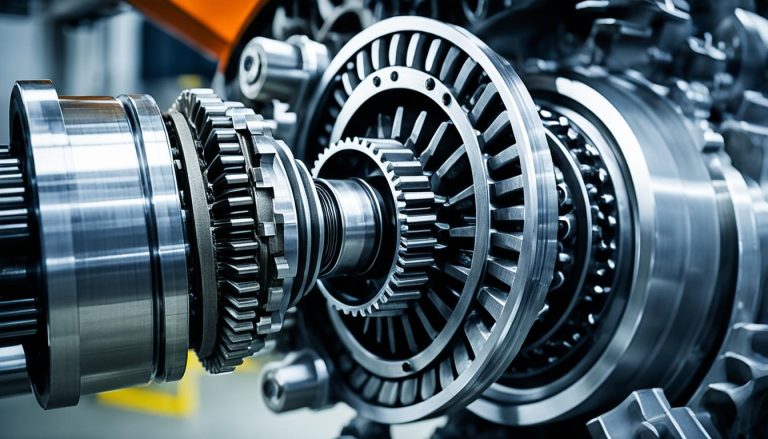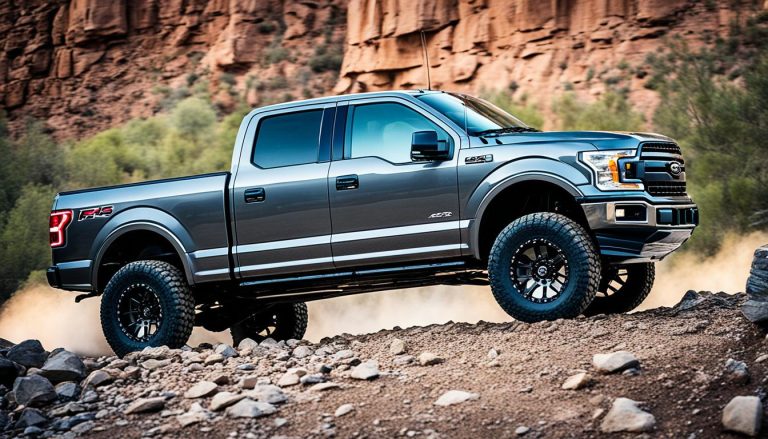Unlock 8 Ford Limited Slip Rear: Easy Guide
If you’ve ever stomped the gas pedal hoping for an impressive burnout, only to find that a lack of traction sabotages your efforts, you’re not alone. The thrill of having both rear tires spinning in unison is often hindered by a common culprit—an open differential. For those in the know, Ford’s Traction-Lok or a transition to a Detroit Locker, particularly for 8-inch and 9-inch removable carrier rearends, provided a sought-after solution. Today’s market expands your options, including modern electric and pneumatic lockers, as well as advanced friction materials. To ensure you’re getting the most out of your vehicle, understanding how to free up an 8 Ford limited slip rear, performing consistent limited slip differential maintenance, and addressing any Ford limited slip differential problems are fundamental.
Indeed, grasping the nuances of your vehicle’s differential operations isn’t just for mechanical savants. With the right guidance, you can boost your car’s performance, ensuring power is delivered to both wheels when it counts.
Key Takeaways
- Identify the type of differential in your Ford and understand its role in vehicle performance.
- Learn about aftermarket options that can free up an 8 Ford limited slip rear.
- Acknowledge the need for regular maintenance to prevent common differential problems.
- Explore ways to add or change Ford limited slip additive to optimize differential function.
- Recognize when professional differential service might be needed to maintain peak performance.
The Essentials of a Limited Slip Differential
When you’re exploring performance enhancements for your vehicle, understanding the capabilities of your Ford’s limited slip differential (LSD) is crucial. An LSD system is more than an intricate piece of machinery; It’s a marvel of automotive engineering designed to elevate your car’s handling and traction. Let’s delve into the mechanics and necessity of keeping your LSD well-maintained to ensure optimal performance and reliability.
Understanding the Functionality of Your Ford’s Limited Slip Rear
As a vital component, your Ford’s limited slip differential ensures that power is not just sent to one wheel, but evenly distributed to both rear wheels. This enhances grip and performance, especially when accelerating through curves or tackling uneven roads. Ford’s Equa-Lok and Traction-Lok are renowned for their efficient use of steel and friction clutch plates, which engage under spring tension to deliver this added traction. Yet, aftermarket options like Auburn’s high-bias differentials and Eaton’s TruTrac use alternative mechanisms to achieve a similar, if not superior, limited slip effect.
How a Limited Slip Differs from an Open Differential
A standard open differential allocates power to the wheel with the least resistance, often resulting in wheel slip under strenuous conditions. This can hamper your vehicle’s performance, particularly in low-traction situations. In contrast, a limited slip differential ensures both wheels are powered, giving you a significant edge by maximizing traction and stability during acceleration and turning. This key difference is fundamental in the pursuit of an rear differential upgrade and could be the defining factor between a good driving experience and a great one.
The Importance of Regular Maintenance for Performance
Consistent upkeep of your LSD is non-negotiable. Over time, components like clutch plates and springs can wear, which may reduce the differential’s efficacy. Such issues are precisely why your vehicle’s maintenance routine should include a Ford 8 rear end rebuild and regular checks of differential fluid levels. Infusing the system with the right Ford limited slip additive is an essential measure to prevent wear and maintain the dynamic performance of your rear end. The focus is not only on preventing issues but also troubleshooting limited slip differential problems before they lead to failure.
By recognizing the importance of these components and the maintenance they require, you’re setting up your Ford for unyielded success on the road. Whether it’s a regular check-up or a full-scale rebuild, each step is a leap towards unwavering performance and handling.
How to Free Up an 8 Ford Limited Slip Rear
As an enthusiast looking to optimize your vehicle’s performance, understanding the intricacies of your Ford’s limited slip differential (LSD) is essential. The LSD is key to your car’s ability to maintain traction, particularly with an 8 Ford limited slip rear. Ford limited slip differential fluid plays an integral role in the proper functioning of this system. It’s not just about topping up the fluid; it’s about ensuring the right balance for optimal driving experience.
Maintaining your LSD is not as daunting as it might seem. In the pursuit of limited slip differential maintenance, there are certain steps you can take to prevent a decrease in performance:
- Regularly check and replace the differential fluid to make certain your gears are operating in a friction-reduced environment.
- Consider adding or replacing the Ford limited slip additive as it is specifically designed to minimize the wear on the clutch packs.
- Schedule a routine rear differential service to spot any issues before they escalate into significant problems.
Remember, the differential is what allows your wheels to turn at different speeds while maintaining control on curves and turns. By neglecting its maintenance, you’re not only risking the performance but also the safety of your vehicle.
Imagine driving with the confidence that both rear wheels are equally powered and your vehicle responds to your command with precision. This is the advantage of a well-maintained LSD. The good news is, with the right attention and service, achieving a smooth functioning LSD is within your reach.
By ensuring the appropriate Ford limited slip differential fluid is used and that regular limited slip differential maintenance is performed, you’ll keep the components within the differential – like the clutch packs and springs – in peak condition, thereby maintaining that coveted grip on the road where it matters most.
Think of it like this: your vehicle’s performance is a puzzle, and every piece needs to be aligned for the perfect picture. The differential is a crucial piece of this puzzle, especially when it’s a Ford 8-inch limited slip rear. Don’t let it go unchecked, and don’t underestimate the power of premium care and proper rear differential service.
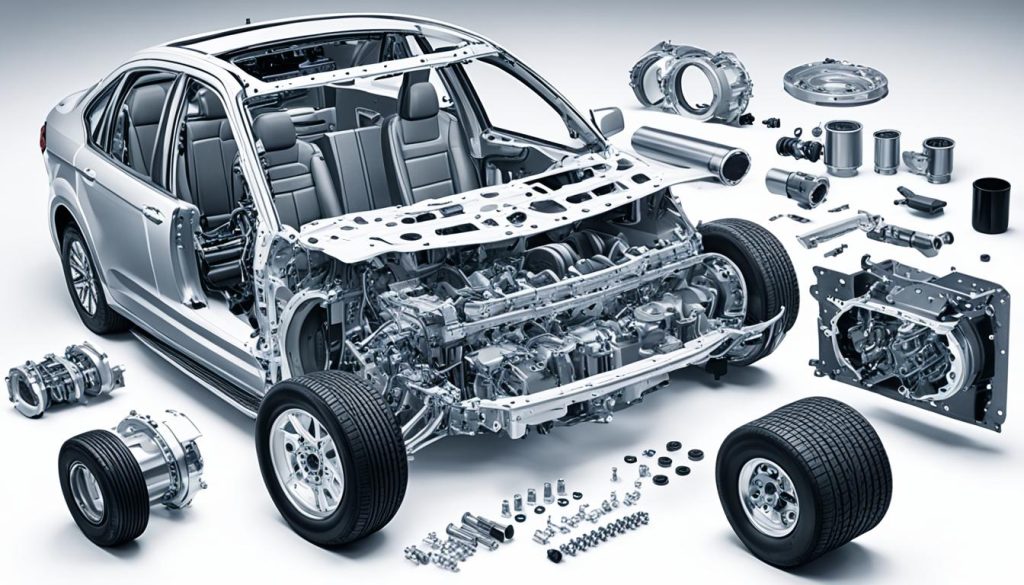
Investing time in understanding your differential’s needs will save you not only potential costly repairs but will also ensure that trip to the mountains or that urge to feel the power on the open road won’t be cut short. After all, your peace of mind is worth the effort in preserving the intricate mechanics that bring exhilaration every time you press the pedal to the metal.
Troubleshooting Common Ford Limited Slip Differential Problems
If you’re a Ford owner, you might be familiar with Ford limited slip differential problems. These can range from a simple fix to complex issues that require a significant Ford limited slip differential upgrade. Understanding how to troubleshoot limited slip differential issues can save you both time and money. Let’s explore the signs that indicate your differential may need some attention.
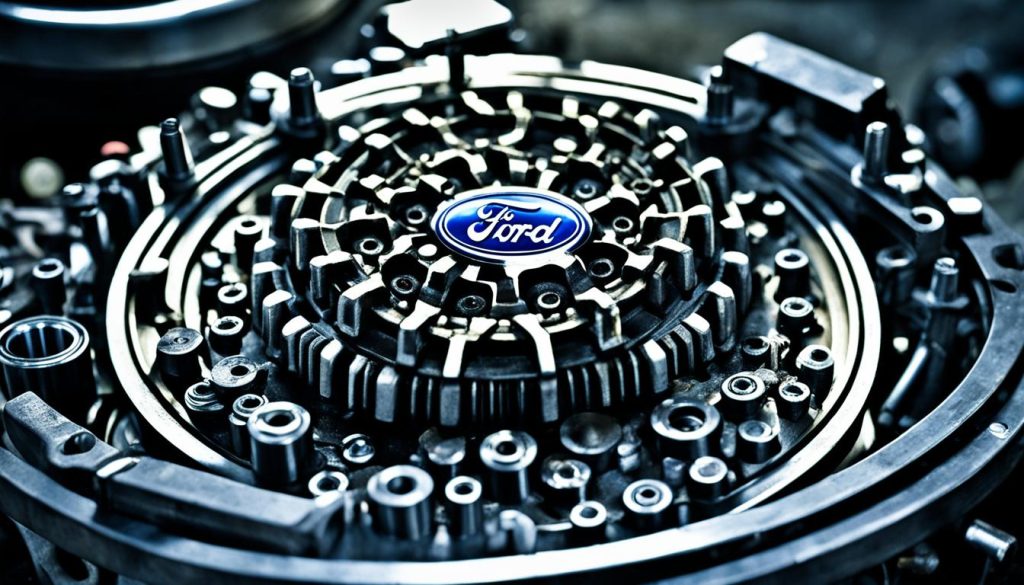
Recognizing Signs of Differential Wear
Hearing peculiar sounds or noticing unsteady handling could point to wear in your vehicle’s differential. If you detect a grinding, whining, or howling noise coming from the differential, it’s essential to investigate further as these could be telltale signs of trouble. Often, these noises hint at concerns like worn clutch packs, which are critical for the proper operation of your vehicle’s limited slip functionality.
When to Add Ford Limited Slip Additive
A common remedy for certain differential problems is the addition of a Ford limited slip additive. This substance aids in the proper engagement and disengagement of the clutch packs within the differential, ameliorating the operation and extending the unit’s life. If you’re experiencing minor issues with traction or notice the characteristic ‘chatter’ on tight turns, it may be time to consider this simple service solution before contemplating more serious repairs or upgrades.
Addressing these problems promptly can prevent more severe issues down the road. Remember, your Ford’s performance and safety on the road are paramount. Paying attention to these details can be the difference between a smooth ride and an unwelcome breakdown.
Ford 8 Rear End Rebuild: When and Why?
Struggling with differential trouble can be a real headache, but understanding when to undertake a Ford 8 rear end rebuild, versus quick fixes, is key to vehicle performance and durability. If you’re noticing signs of excessive wear or outright failure, it may be time to consider a comprehensive rebuild. This is not merely a matter of substituting old parts but an opportunity to enhance the resilience and efficiency of your Ford’s drivetrain.
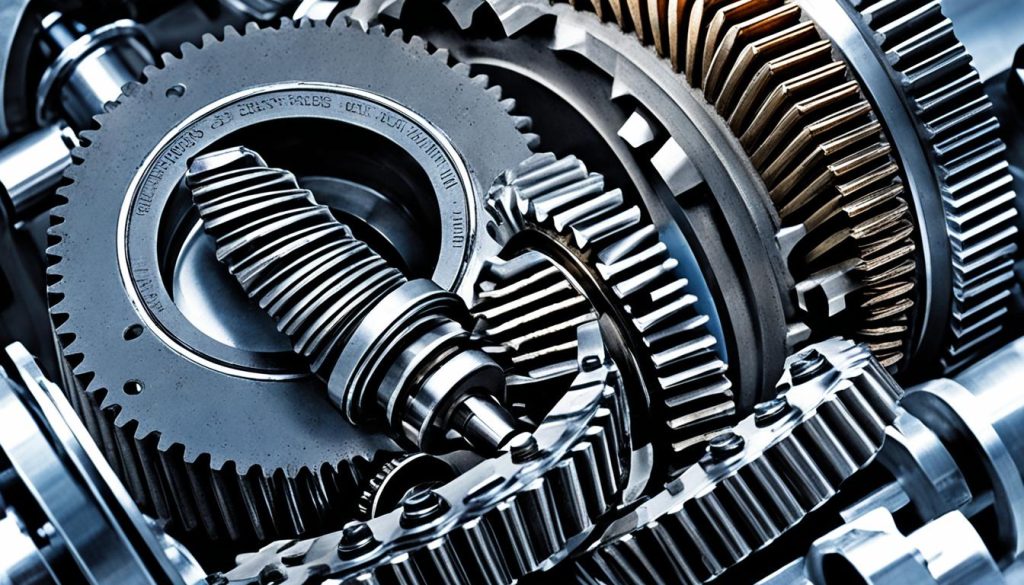
Deciding Between Repair and Total Rebuild
When faced with rear differential troubles, the dilemma you might face is whether to opt for specific repairs or to go for a full-scale rebuild. For minor issues, replacing a defective part might suffice. However, if your differential reveals more ominous symptoms such as persistent noises or a significant loss of traction, these are strong indicators that a rebuild could be a more economical and lasting solution, especially if you are looking at long-term results and consistent performance.
How to Choose the Right Parts for Your Rear Differential Service
Selecting the right parts for your rear differential service or rebuild goes beyond mere compatibility. It’s about investing in your vehicle’s future performance. Opt for high-quality gears and bearings, and consider upgrading your clutch packs if you’re utilizing a Ford limited slip differential. Remember to also replace your Ford limited slip differential fluid to ensure smooth operation post-rebuild. The perfect blend of premium parts will reward you with an enduring and reliable rear differential, prepared to handle whatever the road throws your way.
Understanding the intricacies of a Ford 8 rear end and what it demands during a rebuild are crucial to unleashing its full potential. Whether you’re cruising the streets or prepping for the track, your investment in meticulous maintenance and thoughtful part selection in a rear differential service will pay dividends in performance and peace of mind.
Choosing the Right Fluid: Ford Limited Slip Differential Fluid
Maintaining your vehicle involves attention to every detail, and when it comes to your differential, using the right Ford limited slip differential fluid is not just recommended, it’s essential. The difference it makes to the lifespan and efficiency of your limited slip differential cannot be overstated. Together with Ford limited slip additive, it keeps the gears running smoothly and the clutch pack well-lubricated to preserve that all-important limited slip functionality.
The Role of Your Differential Fluid in Maintaining Limited Slip Function
An effective maintenance schedule for your limited slip differential is key to ensuring your vehicle’s performance. The specific blend of additives and high-quality lubricants in Ford’s differential fluid is engineered to match the exacting needs of your limited-slip mechanism. Without it, you could see an increase in wear and tear, leading to expensive repairs down the road.
Changing Your Differential Fluid: Step-by-Step
Changing the differential fluid can seem daunting, but keeping up with this aspect of limited slip differential maintenance ensures your Ford remains in peak condition. Start with draining the old fluid completely, making sure to remove any debris that may have accumulated. Then, refill with the new, recommended Ford fluid, which is tailored to contain the necessary friction modifiers to optimize your vehicle’s performance.
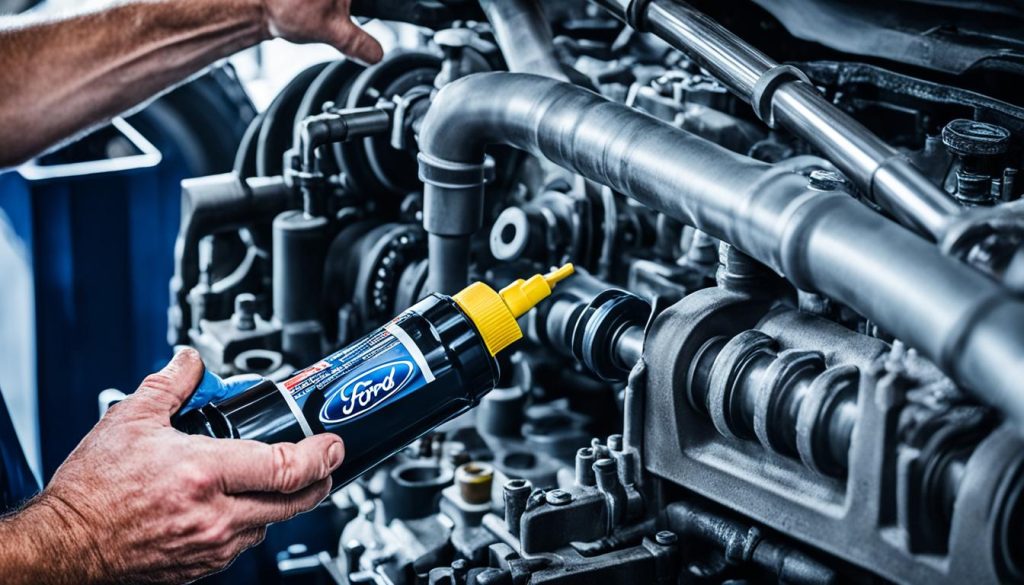
| Step | Process | Notes |
|---|---|---|
| 1 | Locate the differential drain plug | Consult your owner’s manual for exact location. |
| 2 | Drain old fluid | Place a collection pan beneath the plug before opening. |
| 3 | Clean and inspect | Check for foreign particles and metal shavings. |
| 4 | Refill with new fluid | Use only recommended Ford limited slip differential fluid with additives. |
| 5 | Check for leaks | Ensure the fill plug is securely tightened. |
Following the right procedures is easy and an excellent investment in your vehicle’s health. Remember, prevention is better than the cure, especially when it comes to your differential!
Enhancing Performance: Ford Limited Slip Differential Upgrade Options
If you’re looking to elevate your Ford’s handling and performance capabilities, a differential upgrade may be just what the mechanic ordered. With a focus on traction control and superior drive quality, there are a slew of aftermarket options accessible that can transform your ride’s dynamics. From daily commuting to track racing, discerning the optimal setup for your vehicle is critical. By incorporating a Ford limited slip differential upgrade, you’re not just updating a part — you’re redefining the drive.
Evaluating Aftermarket Solutions: From Traction-Lok to Electronic Lockers
When examining the array of aftermarket solutions, it’s essential to weigh the benefits of each type. Traditional choices like the Traction-Lok are battle-tested and known for increasing performance. On the flip side, technological innovations have birthed options like electronic lockers, which offer on-the-go engagement at the flip of a switch. Whichever route you choose, incorporating a Ford limited slip additive is paramount to ensure your differential is functioning at peak efficiency and preserving those crucial gear systems.
Maximizing Traction: Exploring Lockers, Spools, and Limited Slips
For those of you intent on maximizing traction, it’s a balancing act to match your vehicle’s intended use with the right kind of differential. A locker may provide full engagement of both wheels, ideal for those rugged, off-road adventures or traction-demanding scenarios. Conversely, spools present an all-out approach best suited for tracks, where traction sacrifices during cornering are less of a concern. Limited slip differentials strike a harmonious balance between traction distribution and the ability to handle corners smoothly, making them a versatile choice for an array of driving conditions. No matter your preference, a rear differential upgrade can provide a noticeable difference in your Ford’s driving dynamics.
FAQ
How do I free up an 8 Ford limited slip rear?
Freeing up an 8 Ford limited slip rear involves ensuring all internal components, such as the clutch packs and springs, are in good working condition. Adding or replacing the Ford limited slip additive in the differential fluid can also improve performance.
What are common Ford limited slip differential problems?
Common issues include noise, vibrations, and one wheel spinning more than the other. These problems can occur due to worn clutch plates, insufficient lubrication, or the need for additional Ford limited slip additive.
What maintenance is required for a limited slip differential?
Limited slip differential maintenance includes checking and replacing the differential fluid regularly, inspecting the condition of the clutch packs and springs, and ensuring proper use of additives.
What’s the difference between an open differential and a limited slip differential?
An open differential distributes power to the wheels with the least resistance, often resulting in one wheel spinning. A limited slip differential applies power to both wheels while still allowing them to rotate at different speeds when necessary, such as through turns.
Why is regular maintenance important for the performance of my limited slip differential?
Regular maintenance is crucial because it prevents wear and tear on the differential parts. It ensures the smooth operation of the gears and that both wheels receive appropriate power for optimal traction.
When should I consider a rear differential service?
Consider a rear differential service when you notice any signs of wear such as noise, poor traction, or if the differential fluid appears dirty or has not been changed according to the manufacturer’s recommended intervals.
What signs indicate the need to add Ford limited slip additive?
If you notice decreased performance in traction or if the differential is excessively noisy during turns, it may be time to add Ford limited slip additive. This helps to restore proper function to the clutch plates within the differential.
How do I decide between repairing or rebuilding my Ford 8 rear end?
Choose to repair your Ford 8 rear end if the issues are minor and can be resolved without extensive work. Opt for a total rebuild if you face significant damage or wear, which will ensure long-term performance and reliability.
How do I choose the right parts for my rear differential service?
Choosing the right parts requires understanding your vehicle’s needs and performance demands. Use high-quality, compatible components and consider upgrading to premium lockers or limited-slip differentials if needed to match your driving requirements.
How do I change my Ford limited slip differential fluid?
Change the fluid by draining the old fluid completely, then refilling with the recommended type that contains the necessary friction modifiers. Follow the manufacturer’s guidelines for fluid type and change intervals.
What performance improvements can I expect with a Ford limited slip differential upgrade?
Upgrading can provide better traction and handling, especially under performance driving conditions. Solutions like enhanced lockers and limited-slip differentials cater to specific driving styles, whether it be street performance, off-roading, or racing.
What aftermarket solutions should I consider for my limited slip differential upgrade?
Consider aftermarket solutions such as Traction-Lok, electronic lockers, or helical gear limited slips, like Eaton’s TruTrac. The choice should be based on your vehicle’s intended use to ensure you obtain the best balance between traction and driving dynamics.

